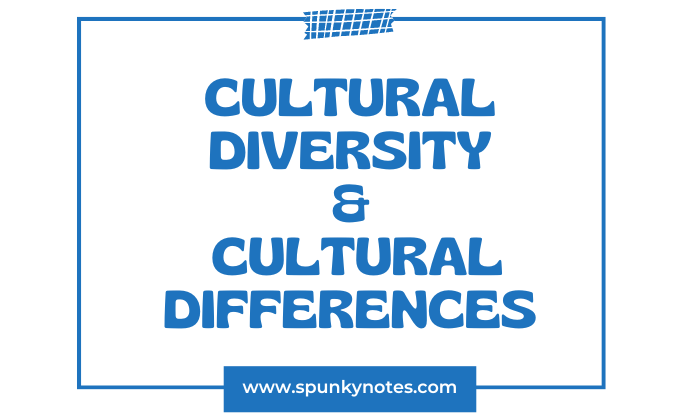

Estimated Reading Time: 5 min
Q. Write a note on Cultural Diversity and Cultural Differences by Homi K. Bhabha.
Homi K. Bhabha, a prominent figure in postcolonial studies, is closely associated with cultural diversity and cultural difference, particularly in how they are understood within postcolonial and critical theory.
Bhabha, an Indian-born scholar whose work spans several disciplines, including literary theory, cultural studies, and philosophy, has been instrumental in shaping contemporary understanding of these terms.
Bhabha’s Perspective on Cultural Diversity & Differences
Cultural Diversity
Cultural diversity refers to the variety of human societies or cultures in a specific region or globally. It is about the coexistence of different cultural groups and their distinct traditions, customs, and practices within a particular area.
In Bhabha’s view, cultural diversity is often seen within multiculturalism and comparative studies. He suggests that this approach treats cultures as static and distinct entities.
In this traditional sense, cultural diversity involves acknowledging and cataloguing differences in cultural practices, customs, and traditions.
It is a perspective that allows for the coexistence of multiple cultures within a single societal framework.
Bhabha is critical of this approach, as it can lead to a superficial understanding of cultures, treating them as isolated and unchanging.
It must often address the historical and political forces that shape cultural identities and expressions.
Cultural Difference
Cultural difference focuses on the variations in life, beliefs, traditions, and laws between different countries, religions, societies, and people. It is more about how these cultures manifest their uniqueness and how intercultural interactions influence these manifestations.
As articulated by Bhabha, cultural difference is a more dynamic and critical concept. It goes beyond the mere recognition of diversity to interrogate how cultures express themselves, how they are understood and represented, and how they interact with and influence each other.
This concept emphasizes the process of cultural enunciation – how cultures articulate their identity and authority. Bhabha emphasizes the ‘third space’ – a concept he introduced to describe an interstitial zone where different cultures meet and clash.
This space is characterized by hybridity and ambiguity, where cultural meanings are negotiated and redefined. Cultural differences are most evident in this space, where the traditional boundaries and definitions of culture are challenged and transformed.
Cultural Hybridity
A key aspect of Bhabha’s theory is the challenge to the binary division between past and present, tradition and modernity.
This approach is essential for understanding the formation of today’s cultural identities. Historical traditions influence them and constantly evolve due to past colonialism and global interactions.
Homi K. Bhabha’s contribution to understanding cultural diversity and cultural differences is significant. He moves the discourse beyond simply acknowledging cultural variety, advocating for a deeper examination of how cultures interact, influence, and transform each other.
His ideas about the third space and hybridity help us see culture in a more detailed way. He shows that cultural identities are flexible and complex, especially after colonialism.
Bhabha’s theories have been influential in various fields. They challenge traditional notions of culture and identity and provide new ways to understand the complexities of a globalized world.
Differences Between Cultural Diversity and Cultural Difference
- Conceptual Focus
- Approach to Cultural Interaction
- Treatment of Culture and Identity
- Historical and Political Context
1- Conceptual Focus
Cultural Diversity: Cultural diversity concerns the existence and recognition of multiple cultures within a given setting. It emphasizes the variety of cultural expressions, customs, and traditions.
Cultural diversity typically operates within a framework of understanding and cataloguing these differences, often under a multiculturalism approach.
Cultural Difference: Bhabha’s notion of cultural difference goes beyond mere recognition. It focuses on how cultures articulate and express their uniqueness and how these expressions create meaning and establish authority.
It is more about the dynamic process of cultural interaction, negotiation, and creating new cultural forms.
2- Approach to Cultural Interaction
Cultural Diversity: When exploring cultural diversity, we frequently compare differences and similarities in cultural practices and beliefs. It treats cultures as distinct and separate entities.
It looks at how these entities coexist and relate to each other within a society, but one can understand this coexistence in a relatively static and superficial way.
Cultural Difference: In contrast, cultural difference involves examining the interactions and collisions between cultures in what Bhabha calls the ‘third space.’ This is more dynamic, emphasizing the processes of hybridity and the emergence of new cultural forms that defy traditional categorizations.
3- Treatment of Culture and Identity
Cultural Diversity: This view often regards cultures as fixed and homogenous entities. It focuses on recognizing and valuing various cultures just as they are.
This approach does not probe into how these cultures come about and change due to outside influences.
Cultural Difference: Bhabha’s concept challenges the notion of fixed cultural identities. It looks at how cultural identities are continuously formed and reformed through interactions.
This emphasizes the fluid and evolving nature of culture. It critically engages with the notions of power, colonialism, and postcolonialism in shaping cultural identities.
4- Historical and Political Context
Cultural Diversity: This concept focuses less on the historical and political contexts that shape cultures. It tends to abstract cultures from their historical and political conditions, sometimes leading to a depoliticized understanding of cultural differences.
Cultural Difference: In Bhabha’s view, cultural difference is deeply rooted in historical and political contexts. It critically examines how historical events, especially colonialism and its aftermath, influence cultural expressions and interactions.
These differences highlight Bhabha’s critical perspective on how cultures interact and evolve, especially in a postcolonial context.
Cultural diversity focuses on acknowledging and valuing various cultural expressions in a specific area or worldwide.
On the other hand, cultural differences go beyond just recognition. It seeks to understand the subtle details and interactions among cultures.
History and their environment shape how cultures change and grow. Bhabha emphasizes their significance in shaping and transforming cultural identities in a postcolonial context.


